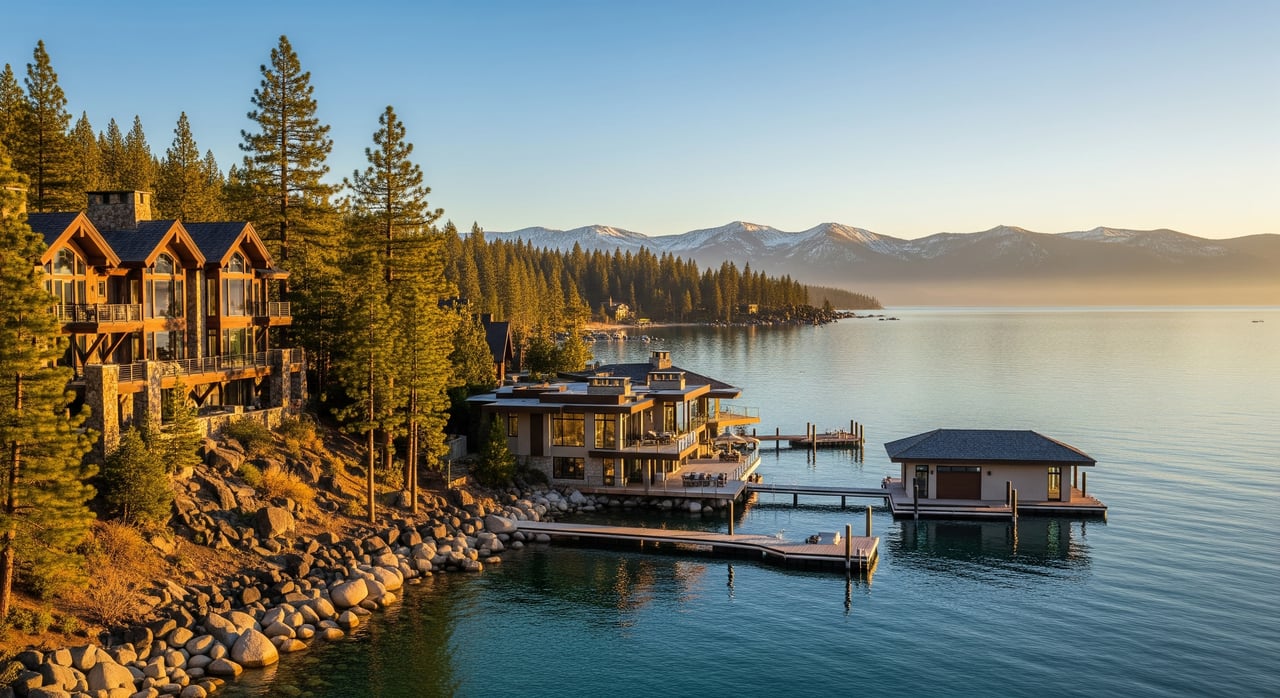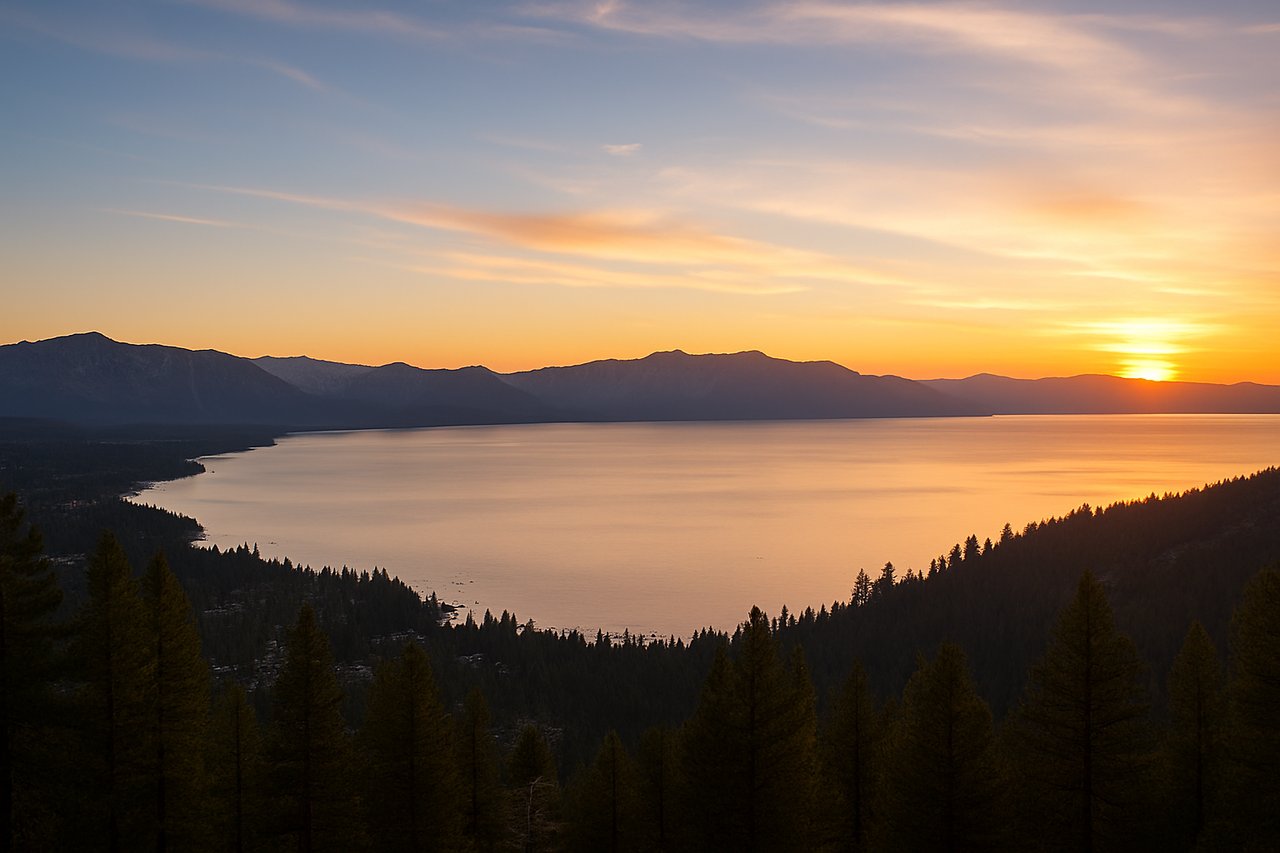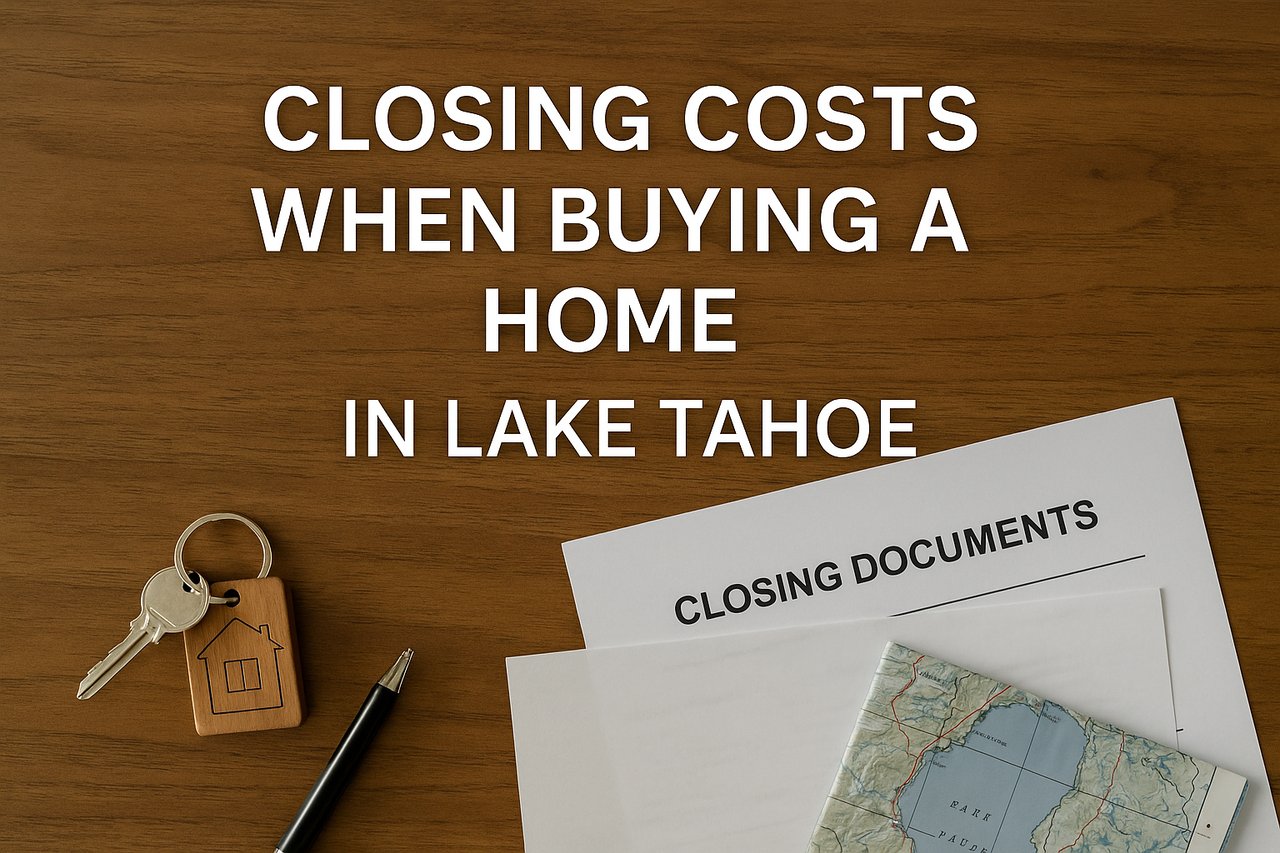South Lake Tahoe’s Business Transition: Writing the Next Chapter
My Tahoe story has had three chapters: childhood summers spent visiting my Uncle in the Tahoe Keys, a young adulthood hustling three jobs just to make ends meet, and today, a career in real estate that allows me to work alongside the small businesses and families shaping our community. Through each of those seasons, one thing has been clear: South Lake Tahoe has always been a place of both opportunity and challenge.
I've been reflecting on the Tahoe Tribune calling this a “transition period” for our business sector (Jan 2024) — a fitting description for the recalibration our community is experiencing. I've been spending more time connecting with local businesses around town, meeting new business owners and Tahoe truly is going through a big change. We’re coming out of the pandemic years, when real estate values soared, affordability gaps widened, and tensions between locals and visitors grew sharp. And over the past few years, especially after the Caldor fire, Tahoe's resilience and growth has become even more apparent and bright.
I think back to the Caldor Fire, when we all shared the same fear and the same hope. That crisis reminded us that despite our differences, this mountain town is built on a foundation of community. The question now is: how do we carry that same spirit into building an economy and culture that works for both locals and visitors?
My Three Tahoe Chapters
As a kid coming from Merced, Tahoe felt like Shangri-La — the mountains, the fresh water, the sense of escape. When I moved here for the first time in 2014, reality hit. I worked three jobs — serving tables at Cold Water Brewery, working at U.S. Bank as a universal banker, and picking up shifts at Heavenly’s East Peak Lodge. Even with all three, I was barely keeping my head above water.
It was during my time at U.S. Bank that a broker first opened my eyes to real estate. I didn’t jump right away — I took a short career with Apple after finishing my degree — but eventually the pull of Tahoe brought me back, and I dove into real estate full time.
That journey gave me perspective. Through my work at Cold Water Brewery, I saw firsthand how hard it is to run a business here. Tahoe’s economy lives and dies by seasonal tourism. One bad winter, or one smoke-filled summer, can wipe out a business’s margins. That fragility is something we can’t ignore if we want our business community to thrive long-term.
A Surge of New Business — With Caveats
According to the Tribune, 258 new business licenses were filed in just six months — a number that on the surface signals optimism. It shows that people still see Tahoe as a place to dream, create, and invest.
But here’s the caveat: new entrepreneurs are often stepping into outdated, tired commercial spaces. Drive down Highway 50 and it’s clear that many of our buildings need serious renovation before they can attract modern customers. Rarely can a new business move into a space that feels fresh, vibrant, and welcoming from day one. That’s a systemic barrier we should be talking more about.
The businesses that have succeeded recently have done so by carving out something unique. Cuppa Tahoe blends coffee with co-working and community. Three Pines Coffee Co. has built a beautifully designed space with a health-forward menu. The Hangar has created a beer garden where live music and outdoor gatherings feel like a summer staple. Even Cold Water Brewery, where I once hustled as a server, has flourished under new ownership.
These are the bright spots. But if we want 258 licenses to turn into 258 success stories, we have to invest in the built environment that supports them.
Tourism and the Event Economy
Tahoe has always depended on tourism, but what kind of tourism we foster matters. Big-name concerts at Caesars bring people to town. Weekends with major events fill restaurants, hotel rooms, and local shops. Everyone makes money when those weekends are planned — and yet our Tahoe Blue Event Center remains underutilized.
The center was built to be an anchor, a venue that could attract big acts and cultural events year-round. The infrastructure is there, but the programming hasn’t caught up. If we want Tahoe to thrive, we need more shows, more festivals, more reasons for people to plan a weekend here instead of just a day trip.
And not everything has to revolve around nightlife or alcohol. Imagine:
-
Yoga and wellness festivals that connect Tahoe’s natural setting with health and mindfulness.
-
Mountain biking events or Spartan races that showcase our trails and bring in athletic tourism.
-
Health expos and skill-based workshops — from avalanche safety to wilderness survival to lake preservation.
-
Art and music festivals that feature both national talent and local vendors.
This is the kind of diversified event economy that can stabilize Tahoe’s tourism sector while aligning with our identity as a mountain town rooted in adventure and wellness.
Shifts in Visitor Dynamics
Another reality we can’t ignore is the shift in visitor patterns. More day-trippers are coming into town, but they don’t spend the same way overnight guests do. Traffic congestion spikes, locals feel the strain, and businesses don’t see the same lift in sales.
Events change that equation. Overnight visitors — drawn by concerts, festivals, or retreats — book lodging, dine out multiple times, shop locally, and invest in experiences like boat rentals or guided adventures. That’s the kind of tourism that sustains small businesses, not just the casinos.
Policy and the Role of Short-Term Rentals
This is why alignment with local planning and policy matters. The Tourist Core Area Plan, Tahoe Valley Plan, and new Midtown Plan give shape to how we grow. They can encourage mixed-use development, walkability, and spaces where both businesses and residents can thrive.
At the same time, policies around short-term rentals (STRs) are part of the equation. Not every visitor wants to stay in a motel or casino. Many families want a home where they can cook together and relax — while still spending their money in town on entertainment, dining, and activities.
The slow reopening of STRs within the city of South Lake Tahoe is a step toward balance. If done responsibly, it gives visitors choice while creating economic lift for local businesses. The key is thoughtful regulation that protects neighborhoods while allowing tourism to evolve with modern travel trends.
The Path Forward
So, where do we go from here?
-
Reinvest in commercial spaces. If we want to attract visionary entrepreneurs, we need storefronts and buildings that feel modern, not dated.
-
Activate our Event Center. Music, art, and culture bring people here — let’s fill the calendar.
-
Diversify our events. Move beyond food and beverage toward wellness, outdoor recreation, and education.
-
Support balanced tourism. Encourage overnight stays and STR options that sustain local businesses.
-
Strengthen community connection. Create more opportunities for locals and visitors to come together, from vendor fairs to educational workshops
Closing Reflection
Transitions are uncomfortable — but they’re also powerful opportunities. Tahoe is at a crossroads. We can double down on the same fragile, tourism-dependent model, or we can diversify, innovate, and build something more resilient.
The businesses that will thrive here aren’t just the ones pouring coffee or beer. They’re the ones that connect us to each other, to our values, and to the mountain lifestyle we cherish.
If we embrace this transition with creativity, collaboration, and a commitment to balance, we can write a new chapter for South Lake Tahoe — one that honors its spirit while building a sustainable, vibrant future for generations to come.




